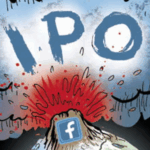 “Data-Driven Thinking” is written by members of the media community and contains fresh ideas on the digital revolution in media.
“Data-Driven Thinking” is written by members of the media community and contains fresh ideas on the digital revolution in media.
Today’s column is written by Zvika Netter, co-founder and CEO at Innovid.
The disruption and transformation among media giants right now is not only an ideal breeding ground for industry reinvention. It’s also the perfect distraction for a tech giant like Google, which seems to be slowly closing its walls to outsiders. By shutting out tech companies and agency platforms behind the scenes, Google increases brands’ and advertisers’ dependence on it for access to its audiences.
There are stories of walled gardens and even monopolies all the time. What makes this instance noteworthy is a steady stream of moves by Google to limit the means by which tech companies and agencies can interact with it at nearly every point of the ad-buying and ad-serving process.
By cutting off third-party access to its inventory and technology platform, Google introduces a situation whereby brands will ultimately have to work directly with it to access the company’s highly valuable YouTube inventory, its ad exchange, its network of publishers and even for important media quality and campaign reporting, such as viewability and fraud data for YouTube inventory.
As Google continues to bundle its services to sweeten the deal for brands buying more impressions with it, a disproportionate amount of ad spending will move to Google and away from publishers that might have otherwise been included in the campaigns. Not to mention that advertisers that relish their media buys with YouTube’s inventory may only work with agencies and tech companies that have joined the Google bandwagon.
A Google Takeover: Effects On Agencies, Tech Companies And Publishers
Google appears to be creating a walled garden that eliminates relationships with tech companies or agencies that do not currently sit on its platform. This essentially forces these companies to make a choice: rely on Google for their tech stacks or lose access to valuable inventory.
Agencies currently have the flexibility to pick and choose from a variety of specialty vendors to create customized solutions specific to their advertisers’ needs. If agencies are forced to work through Google and can no longer choose best-in-class capabilities across the board, they become stripped of one of their core value propositions: acting as a system integrator for the brand.
Effect On Brands And Advertisers
As with any situation characterized by a lack of competition, an advertising ecosystem largely dominated by Google introduces high potential for a lack of quality and lower ROI. Forcing brands’ dependence on Google’s centralized tech stacks, as well as on its often-biased media delivery and reporting, are the two biggest threats. And without competition, there’s really no incentive for Google to best serve, or even be honest with, its customers.
The way this could all theoretically play out is twofold: Google could force advertisers to a minimum ad spend, essentially grabbing share from Facebook, Yahoo and other publishers, if the advertiser wants to keep using Google’s tech stack. Or, Google could allow YouTube to be purchased only through DoubleClick Ad Exchange, which means advertisers will still have to rely on Google for measurement. Or it could be a combination of both.
Verification and viewability are top-of-mind for many advertisers, but I don’t believe Google is equipped to deliver unbiased, top-quality reporting solutions for brand protection.
If Google eliminates third-party reporting on viewability and verification, brands will be left in a situation where Google is reporting on the ad effectiveness of ads running on Google. Without third-party verification, brands have no way of ensuring that they’re getting an accurate and trusted measurement of the Google/YouTube inventory. As a result, they will have no way to properly validate their media spend and placements.
This slowly unravels the work the industry has done to combat ad fraud and proper reporting.
Can The Industry Fight Back?
Of all affected parties, those with the most power are the advertisers. By putting all their eggs into Google’s basket, brands are quietly, but often unknowingly, voting for a level of dominance that will ultimately work against them.
The seemingly only option advertisers currently possess to avoid this is to simply not buy YouTube or Google inventory, which presents a challenge because Google’s reach is crucial for getting in front of younger, connected consumers. So, those who don’t want to play by the rules can always give up their Google inventory, but this significantly decreases their access to audiences and ability to achieve their marketing objectives.
Some advertisers, such as Kellogg, however, are already pushing back on Google, according to the Financial Times. The company stopped buying YouTube inventory because Google would not allow third-party verification vendors to ensure accurate viewability measurement. In return, Google announced that it plans to share some viewability and verification data with third-party vendors.
Follow Innovid (@innovid) and AdExchanger (@adexchanger) on Twitter.













